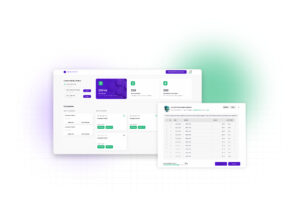A recent survey indicates that 68% of Chartered Accountants (CAs) have experienced fewer audit delays after implementing automated entries in Tally software. This shift towards automation is transforming the accounting landscape, enhancing efficiency and accuracy.
The Shift from Manual to Automated Accounting
Traditional accounting methods often involve manual data entry, which can be time-consuming and prone to errors. Tasks such as purchase entries, bank statement conversions, and ledger maintenance require meticulous attention to detail.
With the advent of accounting automation tools, these processes are becoming more streamlined. For instance, software solutions now offer features like:
- Excel to Tally Integration: Facilitates seamless data transfer between Excel spreadsheets and Tally, reducing manual input.
- Bank Statement Converters: Automatically convert PDF bank statements into Excel formats compatible with Tally, expediting bank entry processes.
These tools not only save time but also minimize the risk of human error, leading to more reliable financial records.
Benefits of Accounting Automation
The implementation of accounting automation offers several advantages:
- Enhanced Efficiency: Automating routine tasks frees up time for accountants to focus on more strategic activities.
- Improved Accuracy: Automation reduces the likelihood of errors associated with manual data entry, ensuring more accurate financial reporting.
- Cost Savings: By streamlining processes, firms can reduce operational costs associated with manual accounting tasks.
- Scalability: Automated systems can easily adapt to increased workloads without the need for proportional increases in staffing.
- Regulatory Compliance: Automation facilitates better compliance with financial regulations by maintaining detailed and accurate records.
Real-World Impact
Firms that have adopted accounting automation report significant improvements in their operations. For example, a study by Bill.com found that 85% of firms offering Client Accounting Services (CAS) observed improved data quality due to automation.
Moreover, automation aids in attracting talent. The same study noted that 57% of firms believe automation helps in attracting new talent, with this figure rising to 70% for firms with over 51 employees.
Implementing Automation in Your Practice
To effectively integrate automation into your accounting practice:
- Assess Your Needs: Identify which processes are most time-consuming and prone to errors.
- Choose the Right Tools: Select software that integrates well with your existing systems, such as Tally.
- Train Your Team: Ensure that your staff is adequately trained to use new automation tools effectively.
- Monitor and Adjust: Regularly review the performance of automated systems and make necessary adjustments to optimize efficiency.
Conclusion
The move towards accounting automation is not just a trend but a necessary evolution in the financial industry. With 68% of CAs reporting fewer audit delays due to automated Tally entries, it’s clear that embracing automation can lead to significant operational improvements. By adopting the right tools and strategies, accounting firms can enhance accuracy, efficiency, and compliance, positioning themselves for sustained success in a competitive market.
Manual data entry can be a never-ending task. It’s tedious, time-consuming, and prone to errors. But what if you could wave goodbye to those monotonous hours spent punching numbers into spreadsheets? That’s where accounting automation tools come in. These tools are designed to streamline your accounting processes, reduce errors, and give you more time to focus on growing your business. In this article, we’ll explore the top 15 best accounting automation tools to help you avoid manual data entry.




